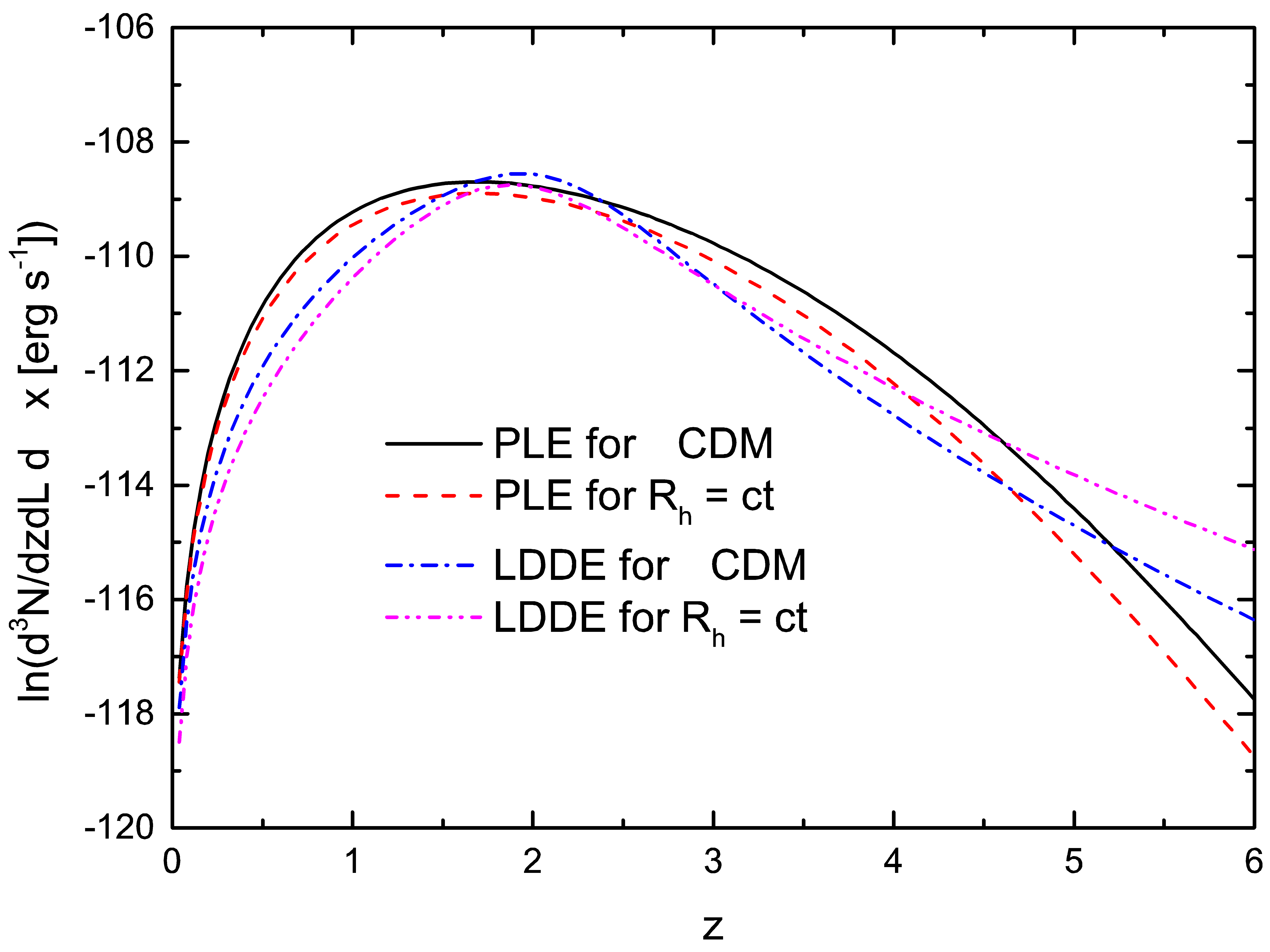Cosmological Tests with the FSRQ Gamma-ray Luminosity Function
2017-01-12The discovery of quasars at redshifts >6 suggests that 109-10M⊙ supermassive black holes emerged only ~900 Myr after the big bang, and only ~500 Myr beyond the formation of Population II and Population III stars. Such large aggregates of matter constitute an enduring mystery in astronomy because these quasars could not have formed so quickly in ∧CDM without an anomalously high accretion rate and/or the creation of unusually massive seeds; neither of these has actually ever been observed. In this paper, we introduce the novel idea of structuring the different gamma-ray luminosity function (GLF) by using this extensive catalogue of FSRQs produced by Fermi during a four-year surveys to test the differential volume expansion rate predicted by two specific models, the concordance ∧ cold dark matter(∧CDM) and Rh= ct cosmologies.

By with ZENG Houdun
Figure 1. Space density of gamma-ray emitting FSRQs as a function of redshift z for the concordance∧CDM and Rh= ct cosmologies, using two formulations of the GLF: pure luminosity evolution and luminosity-dependent density evolution. This illustration corresponds to two fixed parameters: Lγ = 1.0 × 1048 erg s-1 and Γ=2.44.
We use two well-studied formulations of the GLF, one based on pure luminosity evolution (PLE) and the other on a luminosity-dependent density evolution (LDDE). Using several model selection tools to determine statistically which if the models is preferred by data, and a Kolmogorov–Smirnov test on one-parameter cumulative distributions (in luminosity, redshift, photon index and source count), we confirm the results of earlier works showing that these data somewhat favour LDDE over PLE; we show that this is the case for both∧CDM and Rh= ct. Regardless of which GLF one chooses, however, we also show that model selection tools very strongly favour Rh= ct over∧CDM. We suggest that such population studies, though featuring a strong evolution in redshift, may none the less be used as a valuable independent check of other model comparisons based solely on geometric considerations.
The research work by Houdun Zeng, Fulvio Melia (The University of Arizona) and Li Zhang(Yunnan University) has been published in MNRAS (2016, Vol.462, 3094). For more details please see:
http://mnras.oxfordjournals.org/content/early/2016/07/27/mnras.stw1817.

 Search
Search

